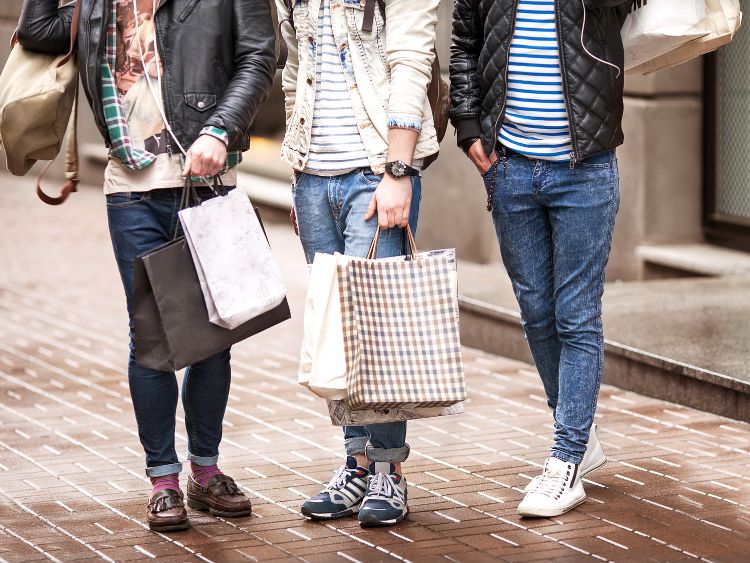The 1960s were a groundbreaking decade, not just politically and socially, but fashion-wise too. The era brought a fashion revolution, introducing bold, eclectic styles that challenged the conventional dress codes of the previous generations. Think about it: miniskirts, go-go boots, and psychedelic prints. These trends didn’t just reflect fashion; they symbolized a whole movement of youth rebellion, freedom, and individuality. Let’s dive into the key elements of 1960s fashion and explore how they still influence us today.
The Key Trends of 1960s Fashion:
The ’60s didn’t settle for safe; it thrived on pushing boundaries. Here are some of the decade’s most iconic fashion trends:
1. The Mini Skirt Revolution
The mini skirt, made famous by designers like Mary Quant, wasn’t just a trend—it was a statement. This daring garment symbolized the rise of youthful independence and free expression. Imagine the shock it caused when hemlines shot up to thigh-high lengths! Women embraced it as a way to break away from the conservative styles of the past.
2. Bold Prints and Psychedelic Patterns
The late ’60s saw the rise of colorful, psychedelic patterns influenced by the hippie movement and the art scene. These bold designs, from paisley to swirling geometric shapes, were everywhere. The vibrant colors reflected a culture in rebellion, rejecting the monotony of traditional fashion.
3. Mod Style
Inspired by the sleek lines and minimalist aesthetics of the Mod movement, this style was all about sharp cuts and bold contrasts. Slim-cut suits for men, A-line dresses for women, and lots of black-and-white combos defined the look. Mod fashion captured the spirit of a new, modern society.
4. Go-Go Boots and Accessories
No ’60s fashion conversation is complete without mentioning the go-go boots. These knee-high, white leather boots became synonymous with the era’s rebellious youth. Often paired with mini skirts, they were the ultimate statement of ’60s chic. Add to that oversized sunglasses, chunky plastic jewelry, and wide headbands, and you’ve got the perfect 1960s accessory combo.
The Cultural Impact of 1960s Fashion:
Fashion in the 1960s wasn’t just about looking good—it was about breaking societal norms. The radical changes in fashion during this period mirrored the cultural shifts of the time. From the civil rights movement to the rise of feminism, fashion became a tool for self-expression and political activism.
1. Women’s Empowerment
Women’s fashion evolved drastically in the ’60s. The miniskirt, for example, wasn’t just about showing skin. It was about embracing freedom. Women were no longer confined to the conservative, full skirts of the ’50s. Instead, they were asserting their independence, both socially and economically.
2. The Youthquake
The ’60s saw a huge cultural shift where young people began to reject the norms of the older generations. This phenomenon, known as the “youthquake,” drove fashion trends. Designers like Mary Quant and André Courrèges catered to this new market, creating clothes that were fun, daring, and different.
3. Music and Fashion Go Hand in Hand
Bands like The Beatles and The Rolling Stones not only revolutionized music but also had a massive impact on fashion. The “British Invasion” wasn’t just about tunes—it was about the mod look, mop-top hairstyles, and the era’s playful yet rebellious vibe.
1960s Fashion Icons:
The ’60s gave rise to a host of fashion icons who are still celebrated today. Their style choices were bold, original, and unforgettable. Who were the key figures driving this revolution?
1. Twiggy
With her pixie haircut, oversized eyes, and petite frame, Twiggy became the face of ’60s fashion. Her boyish figure challenged traditional beauty standards, and her daring outfits—like mini dresses and high boots—made her a global sensation.
2. Audrey Hepburn
Audrey Hepburn’s iconic look from Breakfast at Tiffany’s became one of the most defining moments in 1960s fashion. Her elegance, combined with simplicity, created a timeless style that women around the world still try to emulate.
3. Jackie Kennedy
The First Lady’s sense of style was another hallmark of ’60s fashion. Her pillbox hats, sleek tailored suits, and oversized sunglasses set trends that were emulated globally.
FAQs:
- What were the main styles of 1960s fashion?
The ’60s fashion scene was diverse, featuring mini skirts, mod styles, go-go boots, and bold, psychedelic prints. These looks were heavily influenced by cultural movements and music. - How did the 1960s fashion reflect societal changes?
Fashion in the 1960s broke away from the conservative norms of the previous decade. Women’s empowerment, youth rebellion, and the influence of pop culture allowed fashion to become a form of personal and political expression. - Who were the major fashion icons of the 1960s?
Twiggy, Audrey Hepburn, and Jackie Kennedy were among the most prominent fashion icons of the ’60s, each contributing a unique sense of style that defined the decade. - How did mod fashion shape 1960s style?
Mod fashion was all about sleek lines, geometric shapes, and minimalist styles. It catered to a new generation of youth who embraced modernity and rejected traditionalism.
Conclusion:
The 1960s were a decade like no other in fashion history. Bold, daring, and full of life, this era’s styles still resonate with designers and fashion lovers today. Whether it was the rebellious mini skirt, the sleek mod look, or the vibrant psychedelic patterns, the ’60s was a time when fashion was truly revolutionary. Looking back at these trends reminds us how style isn’t just about clothes—it’s about expressing who you are, where you stand, and where you’re headed.
Authoritative Links (Plain URLs):
- www.vam.ac.uk/articles/sixties-fashion
- www.theguardian.com/fashion/sixties-fashion
- www.britannica.com/topic/fashion-and-dress



